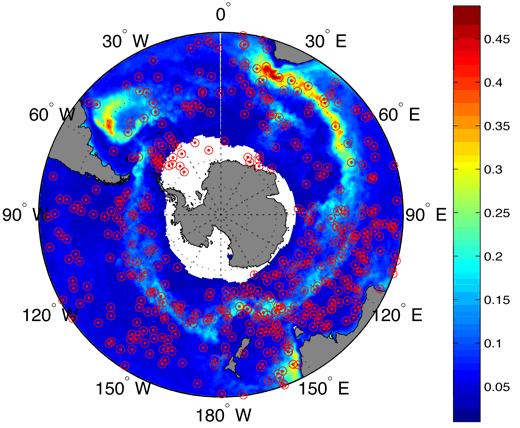The Antarctic Circumpolar Current (ACC)
The “Roaring Forties” drive the world's greatest current, the Antarctic Circumpolar Current (or ACC to friends). The ACC transports about 134 million cubic metres of seawater per second in an eastward direction, and is a major route for water passing between the Atlantic, Pacific and Indian oceans.
Because the region is so inhospitable and remote, there are few ship-based observations. Satellites and Argo floats are therefore important tools for oceanographers working to understand the Southern Ocean, its role in the global current system, its ecology, and its influence on the Earth's climate.
SSH variability in the Southern Ocean
The SSH variability map opposite is produced using altimeter data - see the chapter on altimetry. More explanation here about what SSH variability means?
paragraph here about width of current - relate to SSH map. What do the Argo floats tell us?
Vertical mixing
The Southern Ocean is an important part of the Global Conveyor, a system of surface and deep currents, which act to transport heat from the tropics towards the poles. This is the topic of our next chapter.

